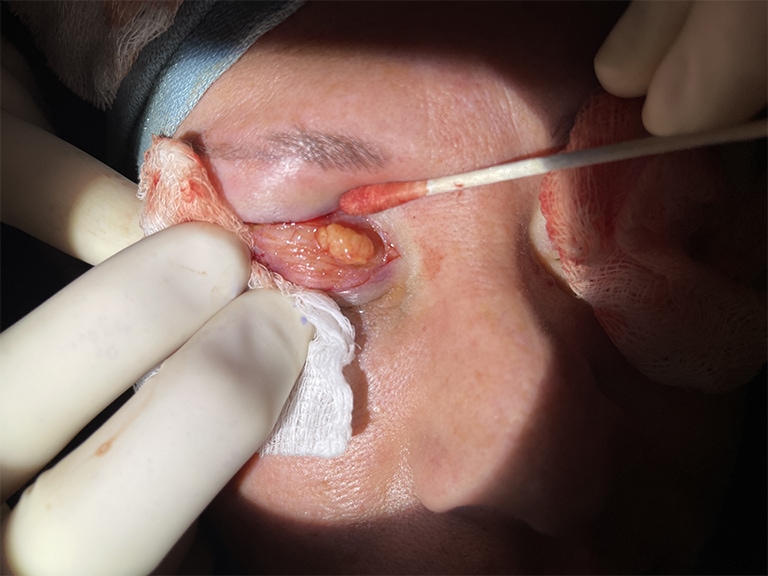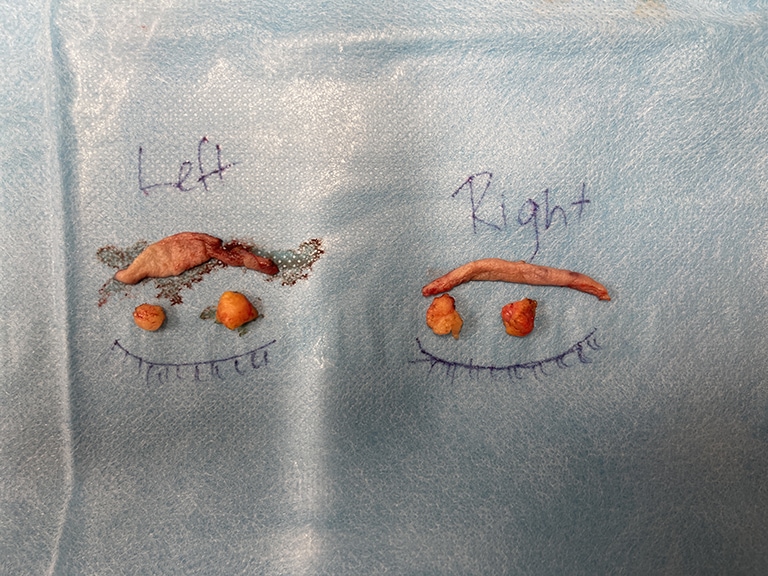What will my eyes feel like after blepharoplasty?
Reactions like soreness, tenderness, swelling, and sensitivity are normal after eyelid surgery. The eyes may be sensitive to light and bright objects immediately after surgery, which may require them to be temporarily covered. Patients should also not be alarmed if they experience blurry vision or a loss of their eyesight for a short time after eyelid surgery — this is common and your normal vision should be restored as your recovery progresses. Dr. Gryskiewicz or Dr. Luck will let you know what you can expect after the procedure so you have a good understanding of the recovery period.
When can I wear contacts again after blepharoplasty?
If you wear contact lenses, your plastic surgeon will advise you to switch to glasses temporarily after the procedure. It’s very important to avoid disturbing the incision sites as much as possible at the beginning of your recovery, so wearing contacts is prohibited for at least ten days or until your incisions are fully healed. This timeframe may vary depending on each patient’s treatment plan and their unique rate of healing.
How long after eyelid surgery can I wear makeup again?
Blepharoplasty incisions are extremely vulnerable to bacteria and other impurities as they’re healing, so patients should generally avoid makeup for at least 10 days to reduce the risk of infection. Like wearing contacts after the procedure, this varies from patient to patient based on how quickly their incisions heal. Once Dr. Gryskiewicz and Dr. Luck determine that you can safely resume makeup application, we advise replacing your old products with new cosmetics to further minimize the risk of harmful bacteria buildup.
What is the difference between eyelid surgery and ptosis repair?
Blepharoplasty and eyelid ptosis surgery are both designed to treat droopy eyelids. The main difference between the procedures is that blepharoplasty is primarily performed for cosmetic purposes while ptosis repair is intended to correct a medical condition. “Ptosis,” refers to a condition in which the levator muscles of the eyelids are weakened, causing a sleepy or droopy look. In some severe cases, patients may have trouble fully opening their eyes or experience headaches, a loss of peripheral vision, and other symptoms.
What’s the best age to undergo eyelid surgery?
The most common age range for patients considering blepharoplasty is between 30 and 80; however, there is no “ideal” age for eyelid surgery. The procedure can benefit any patient who exhibits sagging or puffiness in the upper eyelids. With that said, good candidates are determined based on the concerns they seek to improve rather than their actual age.
Questions? For more information about eyelid surgery or to schedule a consultation with our plastic surgeons, please call or text our office to schedule your consultation today.



